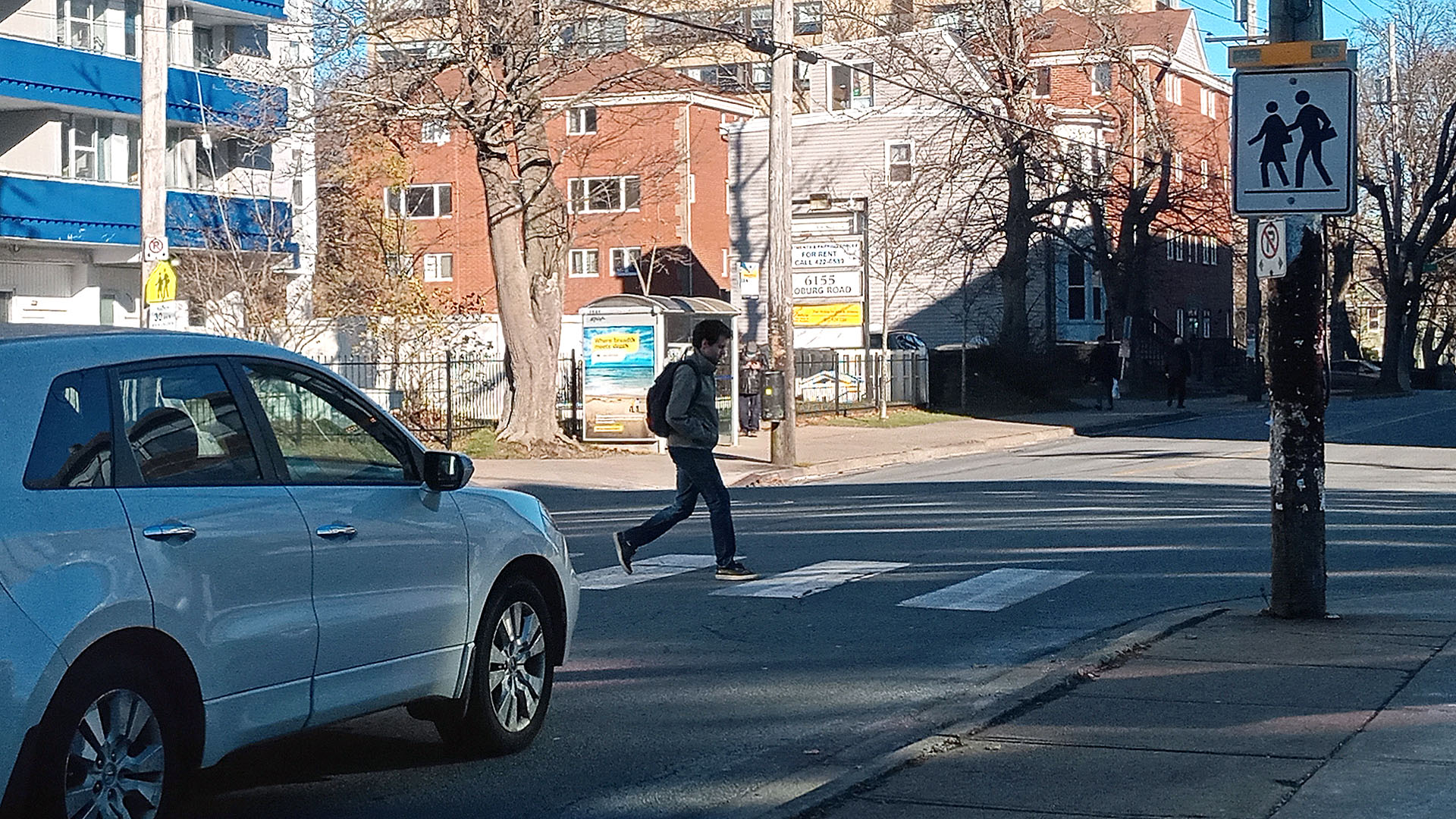Halifax roads are safer, but more needs to be done: Cleary
Safety framework has goal of reducing fatalities to zero by 2038

caption
This intersection at Coburg and LeMarchant in Halifax now sports a flashing amber light when a pedestrian crosses.A plan to reduce injuries and fatalities from traffic collisions has made progress in making Halifax’s streets safer, but more needs to be done to make the streets safe and accessible for everyone, say advocates.
The Strategic Road Safety Framework was approved by Halifax regional council in 2018 in order to reduce the number of fatal and injury collisions in the city. The ultimate goal is to reach zero fatalities by 2038 as part of Towards Zero, a concept that focuses on the idea that “any and all traffic injuries and deaths are unacceptable.”
Speed bumps and other traffic calming measures, flashing amber lights at crosswalks, bicycle lanes, reduced speed limits and curb extensions have been installed all over the city in the last year as part of the plan.
The short-term goal is to reduce fatal and injury collisions by 20 per cent by the end of 2023. According to Lucas Pitts, HRM’s director of traffic management, in a presentation to council on Tuesday, 2022 collision numbers are on track to decrease again.
An update on the framework given to council said that “in 2021, combined fatal and injury collisions were 13 per cent lower than the baseline” set in 2018/19.
“We are trending down at this point,” Pitts said, though he notes that most serious accidents occur in winter.
Coun. Shawn Cleary says that while progress has been good, there is lots of room for improvement.
“We’re going in the right direction,” Cleary said during a council meeting on Tuesday.
He said that meeting the goals laid out in the framework will require constant effort.
“The next council and councillors after I’m gone, and our staff, they’re going to have to keep working at this because we know the vehicle industry is changing,” he said.
Norm Collins, president of the Crosswalk Safety Society of Nova Scotia, says that the update is “a little bit of rose-coloured glasses.”
“I don’t think it’s really taking a good and critical look at the progress that’s not being made,” Collins said in an interview.
Collins analyzed raw data provided by HRM and concluded that the numbers don’t show the same optimism as the update.
“I think that there are some issues that the report seems to gloss over and then left me with the impression that things are good, we’re progressing nicely, et cetera. That doesn’t strike us as the case,” Collins says of his analysis. He said the update uses numbers from the spring while the numbers he used were from the end of September.
Despite this, Collins appreciates that some progress has been made since the framework was introduced. “I appreciate that making progress on this is a challenge,” he said.
Martyn Williams, who runs the Facebook group HRM Safe Streets for Everyone, says that several elements he considers critical have not yet been enacted.
“The first one is a road safety task force that was supposed to be quite influential; it was supposed to be quite bold in decision making,” Williams said. A task force has been formed but both Collins and Williams note that it is comprised mostly of HRM staff. In the original plan, the task force was supposed to include all the community groups who helped develop the framework.
Williams said that had these groups been included, they could have provided essential input.
Towards Zero is a variation of Vision Zero, a concept that started in Sweden in 1997. Though both are similar, Towards Zero puts more emphasis on short-term plans to lessen traffic deaths.
Cleary says zero fatalities by 2038 isn’t really feasible.
“It’s aspirational, right?” Cleary said. He adds that Sweden, where Vision Zero started, still has yet to achieve zero fatalities even though they have been working on the project for over two decades.
About the author

Hannah Marais
Hannah Marais is a fourth-year journalism student and a reporter for the Signal. When she's not out reporting, she's probably cycling, thinking...

J
John